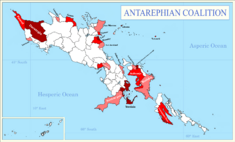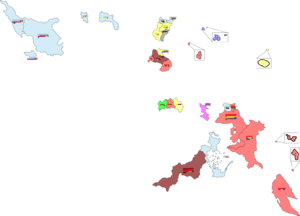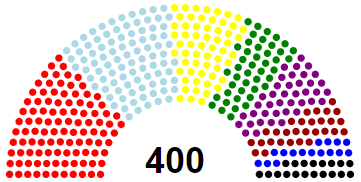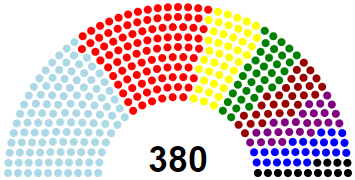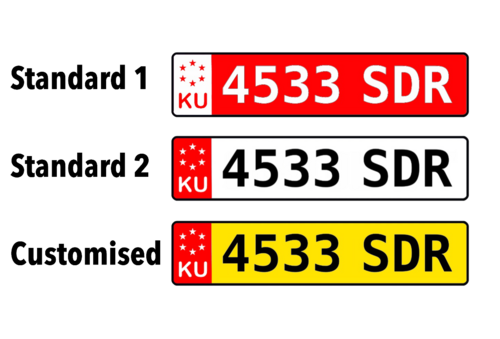Antarephian Coalition
| Antarephian Coalition | |||
|---|---|---|---|
| |||
| Motto: "Brothers of the Motherland" | |||
| Supranational union | |||
| Members | |||
| Official languages |
| ||
Governance | |||
| • Secretary-general of the AC | Vacant | ||
| • Secretary of Progress of the Union | Anya O'Connor | ||
| • Head Justice of the Union High Council | Iveta Peterson Kalisänjo | ||
| • Parliament Majority Leader | Kevin Randall S-D/S | ||
| Population | |||
| • Estimate (2021) | 213,328,442 | ||
Economic information | |||
| Currency | Antari (Union Currency)
Other national currencies
| ||
| Timezone | WUT +3, +4, +5 | ||
The Antarephian Coalition (AC) is a political and economic union of sovereign states on the continent of Antarephia. It was established in 1964 with the economic union of the [TO BE UPDATED] and Kofuku to promote continental unity after the Great War. It aims to facilitate free trade and to facilitate freedom of movement of people and goods between fellow member states. Over the years more countries have joined the union. The AC promotes the economic, political, and cultural shares of the entirety of the Antarephian continent. The AC is considered a regional power and the main union for cooperation in Antarephia, nominally the southern and central portions of the continent.
Traveling: Passport controls have been abolished for travel within the AC members. This means that when traveling by land AC citizens do not have to carry their passports. When traveling by air or boat between two member states, they also don’t need the passport, but they do need their Identification Card. Border controls are also not necessary in this union. There are some borders that don’t respect this, for example the Bromley–Layr border.
| Member state • Non-member state |
Loading map... |
Member States
A new co-founder/co-head is required. Plans are in place for the succession of that position.
| Country | Coat of Arms | Capital | Accession | Population | Area | GDP | GDP per cap | Currency | HDI | No. of Seats | Languages |
|---|---|---|---|---|---|---|---|---|---|---|---|
| Arténie-Ville | 2022 | 2,162,950 | 25,799.85 km² | TBA | TBA | TBA | 0.810 | 4 | Akodjonian, Valonian | ||
| Bromley City | 2015 | 7,612,906 | 107,876.7 km² (disputed) | $129,987 million | $13,500.13 | Unionist Pound (U£) | 0.772 | 14 | Ingerish, Holmic, Ostafariuan-Je | ||
| Dacategia | Ciudad Dacateca | 2016 | 17,214,891 | 797,060.61 km² | TBA | TBA | TBA | TBA | 31 | Castellanese | |
| Geare | 2015 | 4,958,182 | 162,527.32 km² | TBA | TBA | TBA | TBA | 9 | TBA | ||
| Joratumo-Luusanjo | 1974 | 4,780,000 | 45,269.29 km² | TBA | $32,410 | Antari (₳ or ANT) | 0.910 | 9 | Sjepar | ||
| Kalisänjo | Sediharaja | 2007 | 29,035,100 | 224,354.75 km² | $815,770 million | $28,096 | Antari (₳ or ANT) | 0.824 | 51 | Bjéri, Ingerish | |
| Bako-Huz | 1964 (Founder) | 11,828,100 | 353,335.54 km² | $489,991 million | $41,426 | Antari (₳ or ANT) | 0.913 | 21 | Ingerish and Darrsian | ||
| Ȅlikerāvai | 2024 | 3,011,000 | 2,396.53 km² | TBA | TBA | Antari (₳ or ANT) | 0.931 | Kopersian | |||
| Kuhukli Paka | Aopu Liu | 1996 | 6,056,660 | 31,157.60 km² | TBA | TBA | Antari (₳ or ANT) | TBA | 11 | Huipuia Oe | |
| Jeidan | 2006 | 24,000,000 | 200,000 km² | $398,000 million | $17,000 | Šolids (KPS) | 0.700 | 43 | Ting planete | ||
| Layrìtyan, Sante Agustìn | 1998 | 9,916,274 | 20,826.92 km² | TBA | TBA | Layri Lira (L₺) (LYL) | 0.698 | 18 | Holmic | ||
| Aludres | 2011 | 11,149,720 | 48,102.45 km² | $178,830 million | $16,039 | Yerevi rivan (৲) | 0.795 | 20 | Yerevi | ||
| Liberon | Port Royal | 2019 | 99,521 | 21,028.98 km² | TBA | TBA | TBA | TBA | 1 | Valonian | |
| New Austland | Myola | 2019 | 4,738,990 | 71,393.75 km² | TBA | TBA | TBA | TBA | 9 | Ingerish | |
| Reaskuskjo | Jorisiluuso | 2019 | 5,500,000 | 74,057.54 km² | TBA | TBA | TBA | TBA | 10 | Sjepar | |
| San Marcos | Lucero | 1992 | 34,589,593 | 251,777.75 km² | TBA | TBA | Marco sanmarquino м (MSM) | TBA | 61 | Castellanese | |
| Tárrases | Nuevo Tárrases | 1992 | 390,100 | 0,246.6 km² | $10,587 million | $27,140 | Tarrasean Dinar DT$ (DTD) | 0.770 | 1 | Castellanese | |
| Yersinia (Union of the Yersinian Archipelago) | Jupuxe | 1979 | 5,512,192 | 112,121.6 km² | TBA | TBA | TBA | TBA | 10 | TBA |
History
Institutions
The AC institutions headquarters are dispersed around all countries in the Union.
AC Parliament
The AC parliament has 400 seats that are elected every 3 years in the AC elections. Seats are proportionally represented through each member state's population size in comparison to the overall population of the AC, for example: If Kofuku has 5% of the total AC population they choose the parties for 5% of the seats between this options:
It is located in the city of Fiork. Inside the Antarephian Coalition Headquarters Complex (AC Parliament Location)
2023 Parliament
| Year | Distribution | Parties | Notes |
|---|---|---|---|
| 2023 | 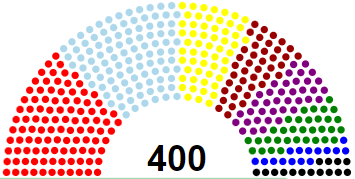
|
S-D/S: 103 seats
C: 99 seats
LR: 56 seats
L: 41 seats
F: 38 seats
G: 33 seats
RR: 15 seats
NI: 15 seats
|
Current Parliament |
Other elections
AC Universal Healthcare System (ACUHS)

The Antarapehian Coalition Universal Healthcare System (known as ACUHS) is the union’s institution in charge of providing free healthcare to all humans inside the AC (no matter if they are citizens of the union or not).
Location: The headquarters of the ACUHS is located in Bako-Huz, exactly in the Sentrum Square. In the corner of Kofuku Avenue and the Diagonal Avenue. Those are the coordinates: South 50.13337 — West 73.04131.
Regulations: The system has some regulations for the healthcare systems of all union countries. First one is to have 3 or more hospital beds per 1000 inhabitants of a country. This means for example that if a country has 1 million inhabitants they should have 3000 hospital beds (approximately 3 hospitals). The next regulation is that all countries must give free access to a patient no matter the nationality or wealth. Also hospitals must give coverage to all the land area of their country. If an area is too mountainous or with population very spread, the closest hospital must have some kind of special method to get there faster (helicopters, planes…)
Programs: The ACUHS hosts a lot of programs to improve the healthcare service inside and outside the AC. Many poor countries outside the AC get helped by the ACUHS. Right now the institution has over 100 humanitarian aid hospitals around the world.
AC Council
The AC Council provides the union with general political directions and priorities, and acts as a collective presidency. It is located in Laalu, Joriskjo.. It takes after a standard parliamentary layout and each nation has an equal balance of representatives to population (for example the Commonwealth's balance is 21 representatives to 6.5 million people).
AC Court of Justice
The AC Court of Justice is the judicial system of the AC. Modeled after the Kofuken judicial system, it receives cases that nations have deemed important enough to warrant oversight by an international court. The COJ is located in the city of Bana-Sunpora, Kwelede-peir.
AC Central Bank
The AC Central Bank is one of the most fragile but important institutions of the union. It’s in charge of many things but the most important ones are to manage the Antari currency (main currency of the union) and to ensure a stable economy in all of the union’s countries and the Coalition's economy itself.
Headquarters: Like the ACUHS, the AC Central Bank Headquarters are located in Bako-Huz, capital city of Kofuku.
The main administrator of the “AC Bank General Secretary” is TBD, born in TBD. Although the headquarters are in Bako-Huz, the central bank has outposts in all other capital cities of the AC members.
AC External Relations Service
AC Universal Education System
Humanitarian, Health and Welfare Organisation
This organisation focuses on the provision of well-being to all citizens of the coalition as well as ensuring human rights, humanitarian aid during times of crisis and social welfare. Its offices administrate cross-national issues involving any provision to human health whether social or physical and works in unison with the ACUHS. Of the many programmes that the HHWO (GSkAO) those of note include:
- Radiation Safety Regulation Certification: offering certification to sites handling radioactive material, and licenses to individuals or groups required or wanting to obtain, handle or access radioactive material.
- Immunological Programme: providing vaccinations and statistics on immunological care to deprived regions and suffering from infectious diseases.
- Quarantine and Control Directive: A sub-section of the HHWO dedicated to controlling the outbreak of disease and ensuring the health of the coalition is ensured.
Hosted in Sante Agustin, Layr; its main office finds itself in the historical district with the Holmic name: Ggulmanitò, Sakà, k'Atyèggul Organisabeggon and is adjoining to the Layri Antarephian Coalition offices.
AC Road Regulations Service
Toll Roads (Payment Roads) Regulations
Each country decides where to place a toll road, but the price must be inside a requirement. The basic requirement is that the toll road must charge the costumer approximately the same amount or less than $0.05 per each kilometre saved + 0.05 per each minute saved. For example, if a route is 200km and 2h long without toll and 100km and 1h long with toll, it would be km (0.05 x 100) + min (0.05 x 60) = Total 5+3 = $7.
License Plates
Here we can see the 3 types of License Plates used by the countries of the AC. The picture shows an example for the country Kofuku, that’s why the the letters KU appear there.
The type 1 is used mostly on Harda Major (the biggest island of the Harda Archipelago).
The type number 2 is the most used outside Harda Major. This one is the most normal one because it has a white background colour.
The type 3 is not very common used. Because it’s reserved for public service vehicles (Ambulances, police cars, buses, garbage trucks…. The AC Road Standard Regulations Service is the one in charge of giving this customized plate to specific institutions of all countries.
Standard Highway Requirements
The standard highway requirements of the AC follow the models laid out by [NEW CO-FOUNDER] and Kofuku. These entail the following elements:
- No set speed limits if possible.
- A minimum of two lanes per highway.
